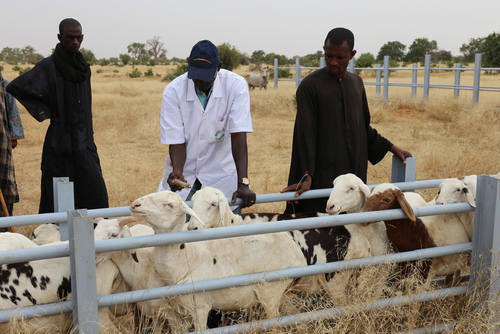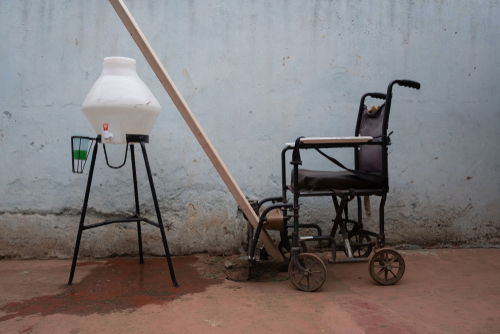March 12, 2024

Unpaid care for Alzheimer’s patients in LMICs
OHT’s Dr. Arindam Nandi’s research shows that globally, Alzheimer’s disease costs the global economy around US$1.3 trillion for both medications and care, with much of the care being unpaid. Models reveal a shift in the burden of Alzheimer’s disease from high-income countries to low- and middle-income countries (LMICs). Data from LMICs, including India and China, reveal a higher proportion of unpaid care related to Alzheimer’s disease compared to paid care, which potentially prevents caregivers of Alzheimer’s patients from obtaining other jobs and decreases household economic output. [Health Policy Watch]
Non-pharmaceutical interventions, such as washing hands and wearing gowns, are cost-effective ways to prevent infections.
A systematic literature review found that non-pharmaceutical interventions, such as hand hygiene and gown usage, had incremental cost-effectiveness ratios (ICERs) which were lower than the willingness-to-pay in all countries, meaning that these interventions are cost-effective. Among pharmaceutical interventions, the review found that in many studies, linezolid-based treatment for methicillin-resistant Staphylococcus aureus (MRSA) had lower ICERs compared to vancomycin. Notably, the review revealed a scarcity of thorough economic analyses of interventions targeting priority pathogens other than MRSA. Future economic studies should use a standardized checklist that accounts for hospital-level considerations and include non-MRSA priority pathogens to determine the cost-effectiveness of antibiotic resistance interventions across facilities. [BMJ Global Health]
Evidence of enteric pathogen transmission between humans and nonhuman primates
With increases in ecotourism, research, and people moving into ape habitats, the risk for novel pathogen exposure is heightened. Researchers performed real-time polymerase chain reaction (PCR) testing of nonhuman primate fecal samples from Cameroon and Tanzania to evaluate zoonotic potential. Testing revealed evidence of at least one enteric pathogen in 83 percent of gorilla and 70 percent of chimpanzee fecal samples. Adenovirus and Cryptosporidium parvum were the most commonly detected pathogens identified in both animal populations. Many of the detected adenoviruses showed high degrees of sequence relatedness to human strains, indicating prior cross-species transmission events and a risk of similar events occurring as human-nonhuman primate contact increases. [Emerging Infectious Diseases]
Farmers with more livestock are more likely to know about AMR.
A cross-sectional survey of 319 farming households in 5 counties in Kenya found that 80 percent of households use antibiotics in their livestock and 58 percent administer the antibiotics themselves. Over three-fourths of farmers were aware of bacterial antimicrobial resistance (AMR) and overall awareness and knowledge about the risks of antibiotic use were high. Farmers who manage a larger number and diverse livestock were more likely to be highly aware of safe antibiotic use practices and antibiotic resistance. [CABI Agriculture and Bioscience]
No evidence that BCG vaccine protected healthcare workers in Brazil against M. tuberculosis
A nested randomized controlled trial demonstrated that the Bacillus Calmette-Guérin (BCG) vaccine was not effective at preventing Mycobacterium tuberculosis infections among healthcare workers in Brazil. Measuring protection against M. tuberculosis as Quantiferon Tuberculosis Test (QFT) Plus conversion by 12 months following vaccination, 3.4 percent of individuals who received the WHO-prequalified BCG-Denmark vaccine had initial QFT conversion compared with 3.2 percent of individuals in the placebo group (risk ratio: 1.09; 95% confidence interval: 0.67-1.77), indicating that the vaccine did not successfully protect the workers against tuberculosis. [The Lancet Infectious Diseases]
Pharmacies are an optimal site for hepatitis C testing and treatment.
A systematic review and meta-analysis showed that the pooled attendance rates of pre-treatment assessment among individuals testing positive for hepatitis C were higher in pharmacies (92.7%; 95% CI: 79.1%-99.9%) compared with referrals to non-pharmacy settings (53.5%; 95% CI: 36.5%-70.1%). The pooled proportion of participants initiating treatment was 85.6 percent (95% CI: 74.8%-94.3%), irrespective of the setting of care. These results suggest that shifting the tasks of hepatitis testing and treatment from tertiary facilities to community pharmacies could yield greater detection and treatment of hepatitis C. [eClinicalMedicine]
Geographical disparities in WASH-related policy coverage
An analysis of water, sanitation, and hygiene (WASH) policies in 193 countries highlighted political feasibility and resource intensity as key barriers to the creation of national WASH regulatory policy and legislation. Comprehensive policies across six WASH domains were most absent in the WHO African and Eastern Mediterranean Regions, where between 50 and 75 percent of countries had applicable policies in each category. These findings provide insights into the current landscape of national WASH-related policies and are publicly available for future AMR policy development. [BMJ Global Health]
Estimating the true burden of cholera in an endemic region of Bangladesh
A statistical modeling study estimated the annual incidence rate of Vibrio cholerae O1 infection as 535 per 1,000 population (95% credible interval: 514-556) in an endemic sub-district of Bangladesh, with incidence increasing with age. For every 3,280 infections (95% CrI: 2,680-3,970), 4 infections would result in symptomatic disease and only 1 of those infected would likely seek care and ultimately be captured by surveillance. These results reveal that many cholera cases go undetected in endemic settings and the need for surveillance systems that provide more accurate estimates of the true burden of cholera in Bangladesh. [Nature Medicine]
Challenges to implementing a malaria vaccine in western Kenya
A qualitative study evaluated the perceptions of policymakers, healthcare providers, and health managers regarding the implementation of the WHO-recommended RTS,S/AS01 malaria vaccine in western Kenya. The integration of the RTS,S/AS01 vaccine into routine immunization schedules posed operational challenges, such as intervention complexity and attrition of skilled staff, some of which persisted over time. However, many of these challenges were overcome in the first two years of the program, and healthcare providers gained confidence from experience in delivering the vaccine. [The Lancet Global Health]
Designing a novel fungal diagnostic assay
A newly designed, affordable fungal diagnostic targeting a single-copy gene (Tef1) successfully detected and differentiated between 30 fungal pathogens. The Tef1 assay outperformed the current first-line diagnostic (ITS1) at identifying filamentous fungi in mock samples with mixed fungal species. Once the Tef1 assay is validated against clinical samples, researchers recommend a combination approach to fungal diagnostics using Tef1 and ITS1 assays to enhance fungal species identification. [BMC Microbiology]
Image from Shutterstock











